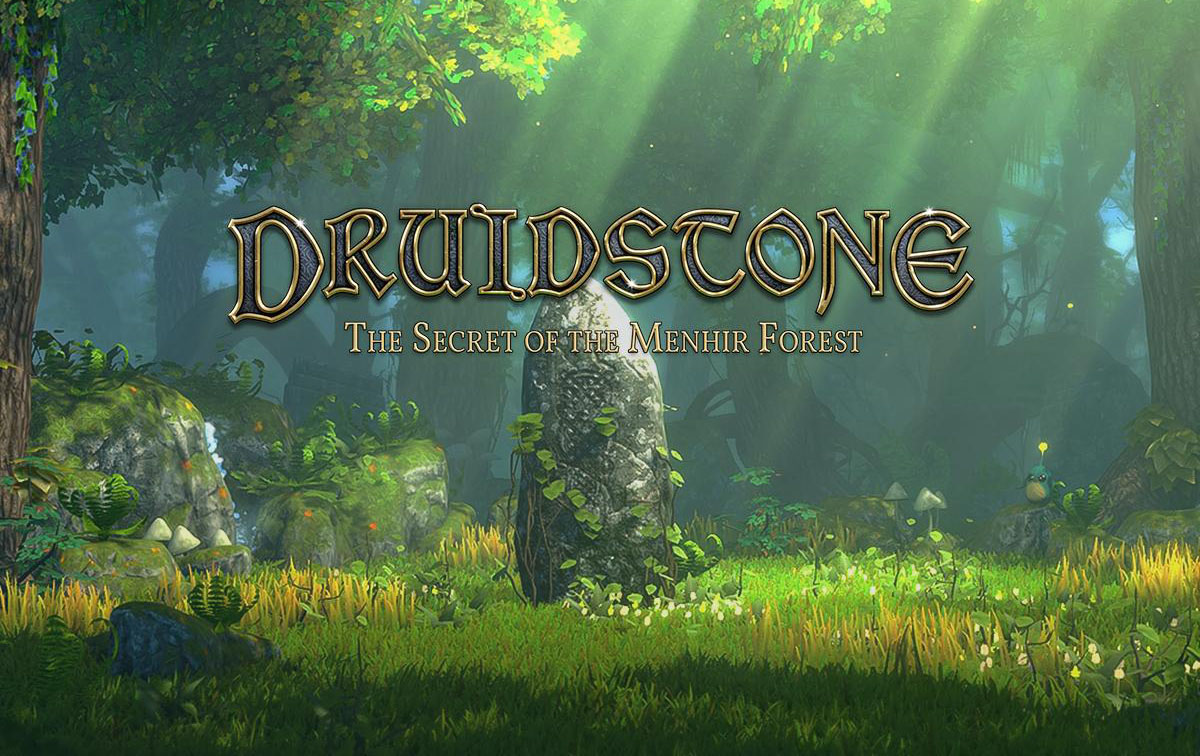
Many PC gamers are probably vaguely familiar with Almost Human Games, the developers of the hit dungeon crawler series Legend of Grimrock. What many people are probably less aware of is that several of the original founders of Almost Human Games split from the company some time back to form a new studio called Ctrl Alt Ninja. Among them are co-founder Juho Salila and Petri Hakkinen, both of whom wanted to create a new game, but were starting to feel the burnout of having worked on nothing but Grimrock for nearly half a decade. Originally announced in 2017, Druidstone: The Secret of the Menhir Forest is the fruit of their labor, and although its drastically different than the Grimrock series, its still no less worthy of your attention.
Druidstone: The Secret of the Menhir Forest
Developer: Ctrl Alt Ninja
Platforms: Windows PC
Release Date: May 15th, 2019
Players: 1
Price: $24.99
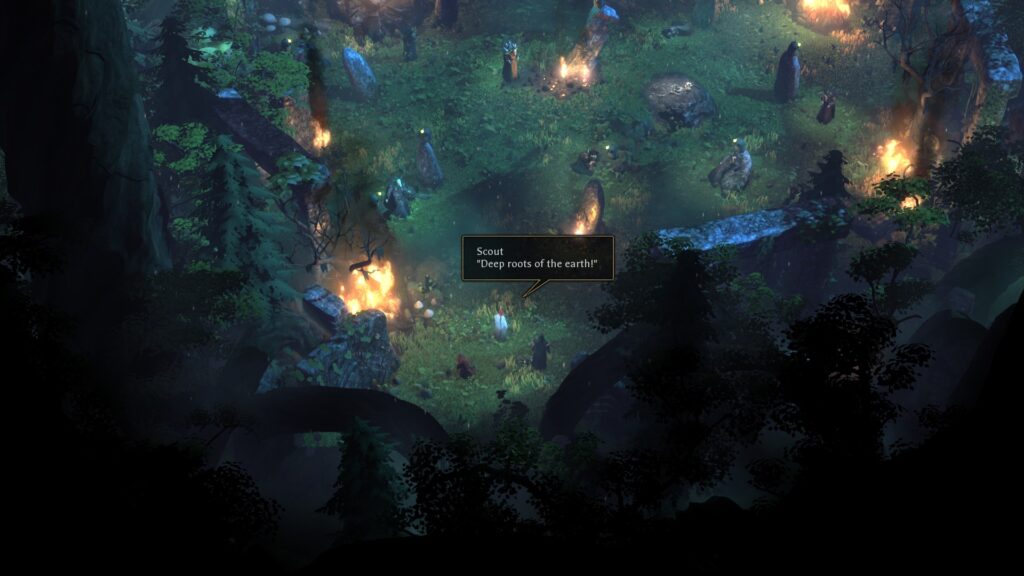
Druidstone: The Secret of the Menhir Forest may look like an RPG at first glance, but in many ways it feels more like an adventure board game. The game is set in the titular Menhir Forest, a once peaceful place ruled by the Druids and their allies, but something is deeply wrong.
A dark corruption dubbed The Cancer is spreading across the forest, forming purple, cyst-like nodes that gradually expand and consume the surrounding area. Strange new creatures are roaming the forest, and areas that were once safe have become hostile to Menhir’s inhabitants.
Worse still, the local cult of crazy arsonists and devil worshipers have become increasingly bold and coordinated under the banner of a new leader. The Red Priests launch an attack on the Druids, slaughtering many of them and kidnapping the Archdruid and members of his immediate family for an unknown, sinister purpose.

That’s were you and your band of heroes come in. Druidstone‘s story primarily focuses on Leonhard the Warden, Aava the Scout and daughter of the Archdruid, and Oiko, a former Red Priest initiate that left the organization after their sudden and violent turn.
Together they will travel around Menhir Forest on their quest to rescue the Archdruid, stop the Red Priests, and find the source of the corruption consuming their home. Most of your adventure will consist solely of these three main characters, though occasionally you’ll get some allies to help you out, like the local Rangers or the fluffy Shido that the Druids use as messengers.
If you’re looking for a sprawling open world to explore with a deep, branching narrative, then Druidstone isn’t going to satisfy you. The story, while serviceable, is ultimately a vehicle to drive you to roughly 35 different missions. The world is mostly just a mission hub, and there’s no exploration or moral choices to be made in the story, hence my earlier comparison to adventure board games.
That isn’t to say the game is awful in this regard, however. Menhir Forest is still a vibrant, colorful world with some interesting locales to visit, its just that your reason for visiting them is solely about combat. The overall writing is also okay, and the characters and their interactions can be charming and humorous, it’s just that Druidstone isn’t a game you’ll be buying for its rich story and lore.
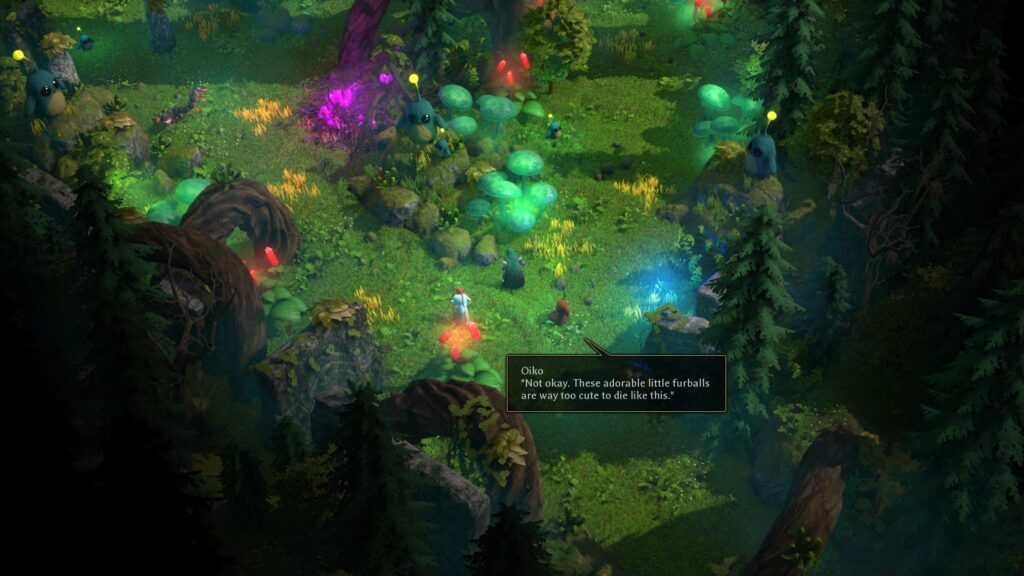
Special mention also goes to the soundtrack, which is a fantastic collection of whimsical folk tunes with some faster and more ominous melodies during boss encounters.
The character customization and growth is also a bit limited by RPG standards, but there’s still plenty of cool choices to make. Leonhard, Aava, and Oiko are all preestablished characters with their own set of skills that slot into a character sheet in a way reminiscent of dungeon crawling board games.
In fact, in many ways the game’s skills and gear feel like cards in a tabletop game. Each character can have 10 abilities equipped at a time, as well as a primary hand weapon, offhand weapon, armor, and an accessory.
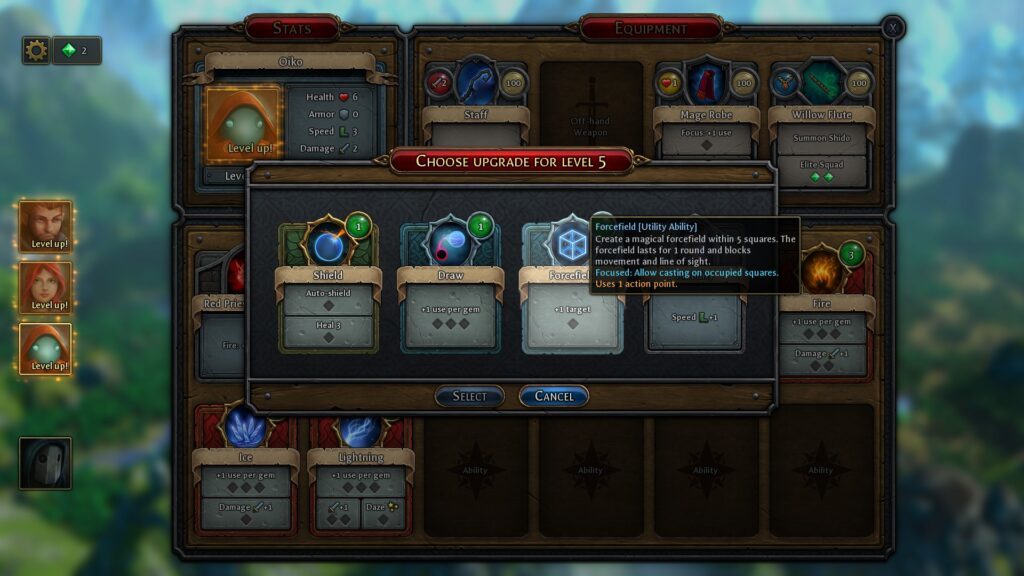
Whenever a character levels up, you are given a choice of several abilities. There’s a few generic ones that all the characters will eventually have access to, like Focus or Power Attack, which give you an alternate version of the next spell you cast, or increase the damage of your next attack, respectively. Most of the skills are unique to the character in question though.
Leonhard is your tank and melee fighter, so most of his abilities are based around reducing incoming damage and dishing out powerful blows with a sword or mace. Aava is a mix of healer and long ranged archer, with lots of abilities based around mobility and keeping away from enemies.
Finally, Oiko acts as your mage and poorly-timed snarky comic relief, so most of his abilities are about reducing your enemies to smoldering piles of ash.
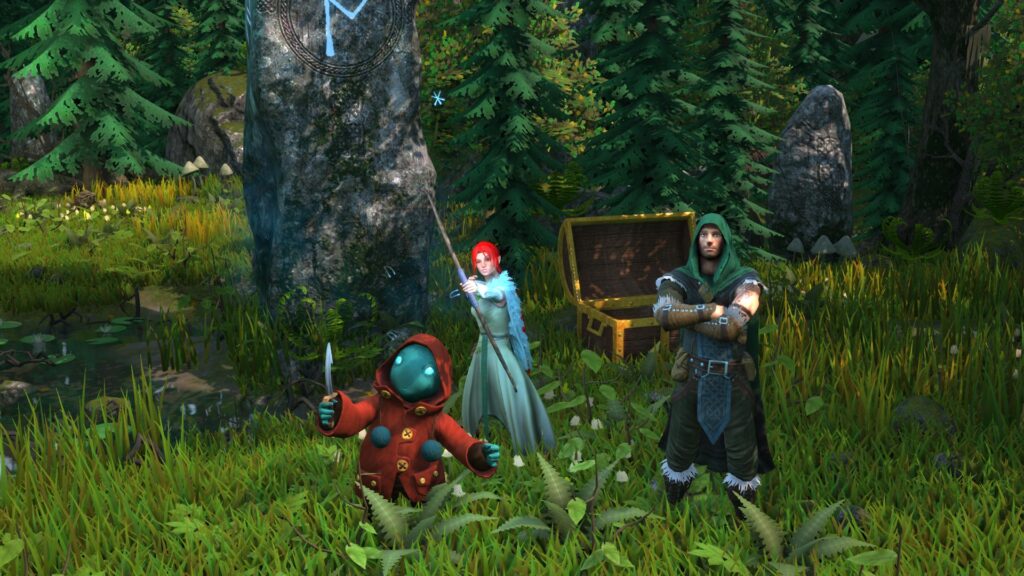
Aside from unlocking new abilities, the main source of character growth comes in the form of Power Gems. Almost every ability “card” can be upgraded by slotting Power Gems into them.
These upgrades might just give you additional uses of the ability per mission, while other upgrades may enhance the power of the ability, or add additional utility to it. You get Power Gems by completing missions and they can be freely slotted or removed at will, so don’t be scared to experiment with your builds.
Another area where Druidstone differs from a traditional RPG is the lack of loot and consumables. Most of your gear will be purchased from a shop keeper, and the only consumables you’ll find will be scavenged from chests during missions.
Sadly, these consumables can’t be taken with you on future missions, so there’s no point in trying to be stingy with what you find. While the game is disappointing in both these aspects, that isn’t to say the gear system doesn’t have its perks.
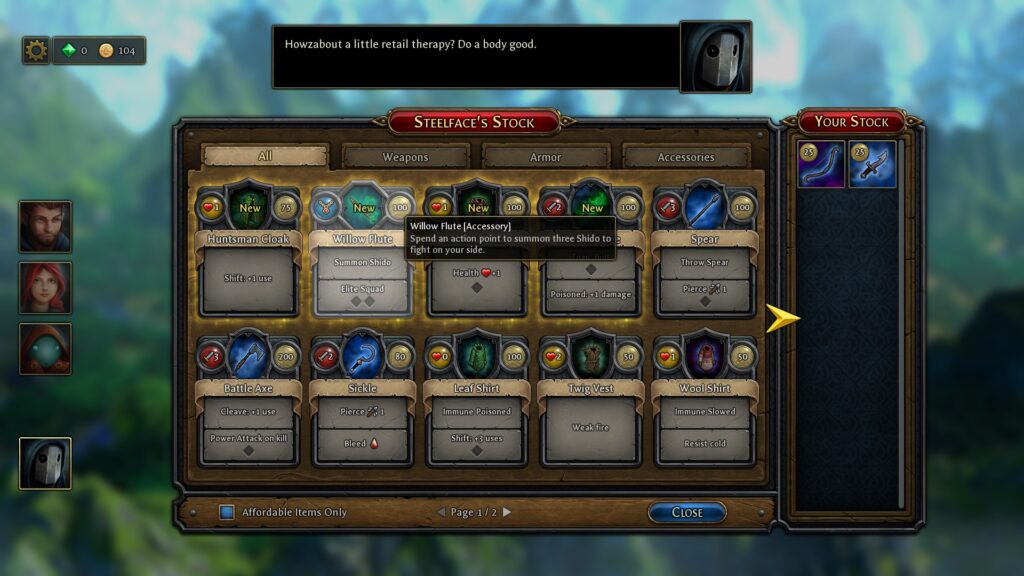
Instead of flooding you with useless items, Druidstone opts to make what gear you do get more meaningful by allowing you to upgrade it with Power Gems just like your abilities. In fact, many pieces of gear actually give you access to another ability as a potential upgrade.
While you will still encounter pieces of gear that are just straight up better than others, Druidstone‘s gear system means that most of what you buy can still be relevant later on in the game as you get more Power Gems.
Enough talk about preparation though, now its time to embark on a mission. As I said earlier, the game’s world map is really just a mission hub. Each level will give you a primary objective and about two or three optional objectives that are always worth pursuing.
Aside from a handful of puzzle room missions, every level will give you a grid-based map full of enemies to take on, and though Druidstone does a nice job mixing up the objectives you encounter, most of them come down to sticking swords into cultists or blowing up skeletons with fireballs.

The combat is definitely the game’s biggest highlight, and should scratch your itch for challenging and satisfying turn-based tactical battles. Each character has several movement points and a single action point, but there’s plenty of ways to optimize your turns. There’s a ton of free skills in the game that might allow you to move a bit further or power up your next attack.
Enemies also have a chance of dropping an extra action point that is instantly picked up whenever a character moves over it, so turn optimization, order of activation, and combos play a big role in surviving Druidstone‘s combat encounters. The battles are also largely devoid of any sort of RNG. Attacks have a set amount of damage they’ll always do unless the target has any armor.
There’s also no missing or dodging attacks in the game, so you’ll never encounter an XCOM situation where a shotgun blast at point blank only has an 85% hit chance. The only real randomness is what consumables are in the chests scattered around a map, and if an enemy will drop health shards, gold, or action points upon death.
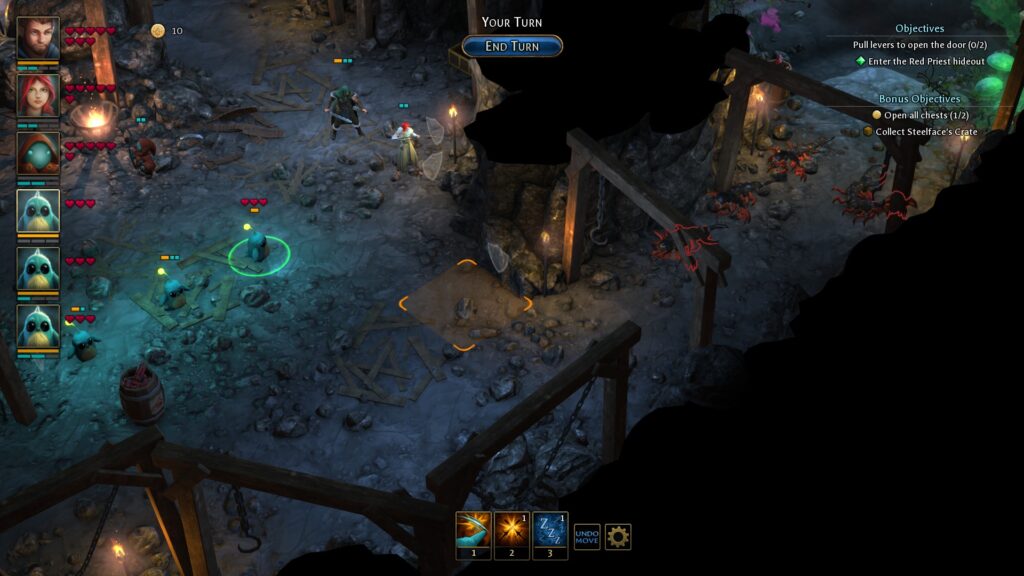
The game’s combat can be quite challenging, even on the normal setting, but I never felt it really dips into “cheap” territory. Occasionally the number of enemies that get spawned in as reinforcements can get irritating, but I never encountered a mission that felt unfair or completely overwhelming.
You can revisit missions whenever you want as well, so if a side objective proves too difficult on your first try, you can always come back later with some upgrades and new abilities. That said, the hard mode takes the easy way out of just spawning more enemies instead of doing any significant tweaks to combat or AI.
My actual complaints with Druidstone are relatively few and far between. There’s always some items and abilities that could use a buff or tweak in games like this, but the game feels fairly well balanced already on the standard difficulty. Occasionally animations will mess up or won’t work right, but I never encountered any significant bugs or glitches.
From a purely quality of life standpoint the game could use more tooltips as well. They exist in the game, but in combat the only way to see what an ability does is to click on it. The settings menu is also fairly lackluster, though the game isn’t particularly demanding and I never encountered any performance issues.
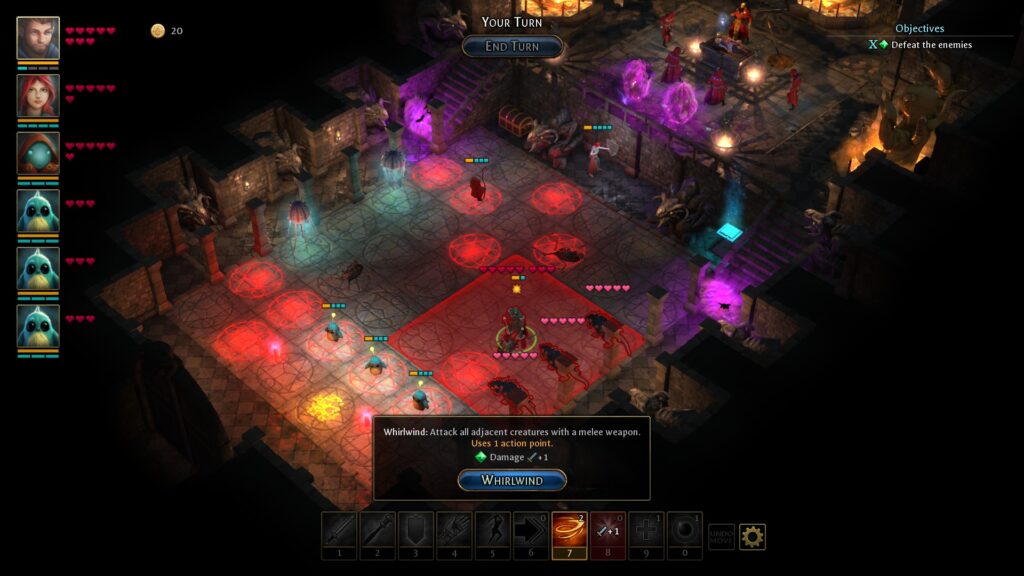
If you go into Druidstone: The Secret of the Menhir Forest expecting a massive, lengthy RPG with rich lore and multiple, branching dialog options, then you’ll be very disappointed.
As a tactical combat game, Druidstone offers some solid combat encounters, challenging missions with good objective variety, around 20 hours of content, and a unique take on character progression and gear, even if its not quite as deep as a traditional RPG.
I must admit that it wasn’t quite what I expected going in, but I still found a really good game that is definitely worth giving a try if you enjoy tabletop-inspired adventures and tactical turn-based battles.
Druidstone: The Secret of the Menhir Forest was reviewed on Windows PC using a review copy provided by Ctrl Alt Ninja. You can find additional information about Niche Gamer’s review/ethics policy here.